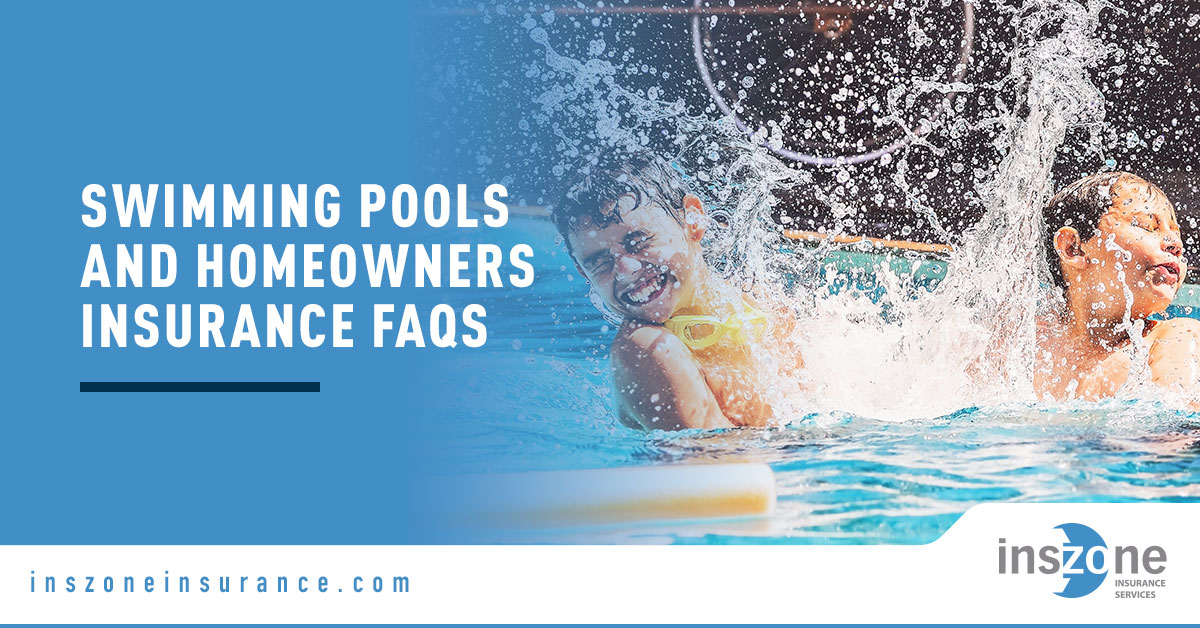A residential swimming pool is typically covered under your homeowners insurance, but the extent of protection depends on the pool type, cause of damage, and your individual policy terms. Most standard homeowners policies include both property coverage (for the pool itself) and liability protection (for guest injuries).
Pools are often considered “attractive nuisances,” meaning they increase your liability exposure. Even if someone uses your pool without permission, you could still be held responsible for injuries. That’s why it’s essential to understand how pool insurance works within your existing coverage and whether additional liability protection is necessary.
Does Homeowners Insurance Cover Swimming Pool Accidents?
Yes. Most homeowners insurance policies include liability coverage for pool-related injuries that occur to guests or visitors on your property. However, liability limits vary, and many insurers recommend increasing coverage for pool owners to at least $300,000–$500,000, with an optional umbrella policy for extra protection.
Because pools increase the likelihood of accidents and lawsuits, many insurers require compliance with local safety laws—such as fencing, self-latching gates, or pool alarms—before providing coverage. Failing to meet these requirements can lead to denied claims or non-renewal.
Liability coverage applies only to non-household guests. If a family member is injured, your health insurance—not homeowners insurance—would apply.
Does Homeowners Insurance Cover Pool Leaks?
Swimming pool damage insurance claims related to leaks depend on the cause.
- Covered: If the leak results from a sudden, accidental event such as storm damage, fire, or vandalism, your homeowners insurance may cover repairs.
- Not covered: If the leak is due to wear and tear, poor maintenance, ground shifting, or aging materials, insurance will not apply.
Similarly, pool collapses are rarely covered unless they result directly from a named peril, like a fallen tree or vehicle impact. Regular maintenance, inspections, and proper winterization are the best ways to avoid costly non-covered damage.
Does Homeowners Insurance Cover Pool Damage from Storm?
Yes—most homeowners policies cover swimming pool damage caused by wind, hail, lightning, or falling objects, provided those perils are included in your coverage.
In-ground pools are usually classified as “Other Structures,” which means coverage is typically capped at about 10% of your main dwelling limit unless you purchase additional protection. Above-ground pools may be classified differently depending on whether they’re portable or permanent.
Not covered: Damage from external flooding, earth movement, or maintenance-related issues. Flood insurance, purchased separately, is required for water damage caused by rising water or runoff.
How Does Having a Pool Affect My Insurance Rate?
Owning a pool increases both your home’s value and your risk profile, which typically raises your homeowners insurance premium. Pools are considered high-risk because they can cause property damage and injuries.
In 2025, many insurers now require proof of safety measures—such as fencing, alarms, or covers—before issuing or renewing a policy. Carriers may also inspect your property or impose higher rates for homes with diving boards or slides.
While premiums may rise, maintaining compliance with safety codes and demonstrating proactive maintenance can keep rates manageable.
Do I Need Extra Liability Coverage for a Swimming Pool?
Yes. Most homeowners policies include personal liability protection, but pool owners should raise limits to at least $300,000–$500,000. Because serious injuries can result in lawsuits exceeding standard policy limits, adding an umbrella policy offers broader protection, often up to several million dollars.
Umbrella insurance covers additional damages if a lawsuit exceeds your primary policy’s limits—an essential safeguard for pool owners hosting guests or renting their property.
Do You Have to Tell Insurance About a Pool?
Absolutely. Adding a pool changes your home’s risk classification, and failure to disclose it could lead to claim denials or cancellation of coverage.
For above-ground pools, classification depends on permanence: portable versions are usually treated as personal property, while permanently installed models fall under “Other Structures.” In-ground pools are almost always “Other Structures,” with limits capped at a percentage of your dwelling coverage unless increased.
Always notify your insurer before installation to confirm your policy type, coverage limits, and any safety compliance requirements.
What Safety Rules or Policies Apply?
Safety requirements differ by state, but most insurers expect compliance with local and state regulations. Noncompliance can increase premiums or result in denied coverage.
Key safety features and requirements include:
- Fencing: Minimum height requirements (typically 4 feet or higher) with self-closing, self-latching gates.
- Alarms: Pool, door, or gate alarms can reduce liability risk and demonstrate compliance.
- Safety Covers: Automatic or lockable covers may qualify for small premium credits.
- Slides & Diving Boards: Often excluded or surcharged; always disclose to your carrier.
State-Specific Highlights
- California: Requires two of seven approved safety features (fence, alarm, cover, etc.); noncompliance may raise premiums or restrict eligibility.
- Florida: The Residential Swimming Pool Safety Act mandates fencing or alarms and proof of compliance.
- New York: Requires a 4-foot barrier and door alarms; inspections may occur before coverage.
- Texas: Requires a minimum 4-foot fence and self-latching gate; umbrella liability strongly recommended.
- Arizona: Barrier must be at least 5 feet high with self-latching gates; failure to comply may void coverage.
Understanding Pool Coverage at a Glance
In-ground pools: Usually covered as “Other Structures” for specific perils (fire, wind, vandalism), excluding wear and tear.
Above-ground pools: Considered personal property if portable or “Other Structures” if permanent; coverage varies by setup.
Liability: Raise limits to $300,000–$500,000; umbrella coverage strongly advised.
Exclusions: Earthquakes, floods, neglect, poor maintenance, and structural collapse.
Pools enhance comfort and home value, but also bring increased responsibility. Staying compliant with safety laws and maintaining proper insurance ensures both protection and peace of mind.
Protecting Your Home and Guests with Pool Insurance
Whether your pool is above-ground or in-ground, reviewing your swimming pool insurance requirements helps protect both your property and the people who enjoy it. Confirm with your insurer how your pool is classified, raise liability limits as needed, and verify that safety features meet local code.
With the right mix of homeowners insurance, safety compliance, and proactive maintenance, your pool can remain both a luxury and a well-protected investment.
Swimming Pools & Homeowners Insurance FAQ
Q: Does adding a diving board change my insurance?
A: Yes. Some insurers exclude them, while others surcharge. Always disclose to your carrier.
Q: Can safety upgrades lower my premium?
A: They often help with eligibility and reduce liability risk, but discounts may be modest. The real value is preventing claims and ensuring coverage.
Q: Do I need to raise “Other Structures” coverage?
A: If your pool and landscaping exceed the standard 10% of your dwelling coverage, ask your agent about increasing limits.





